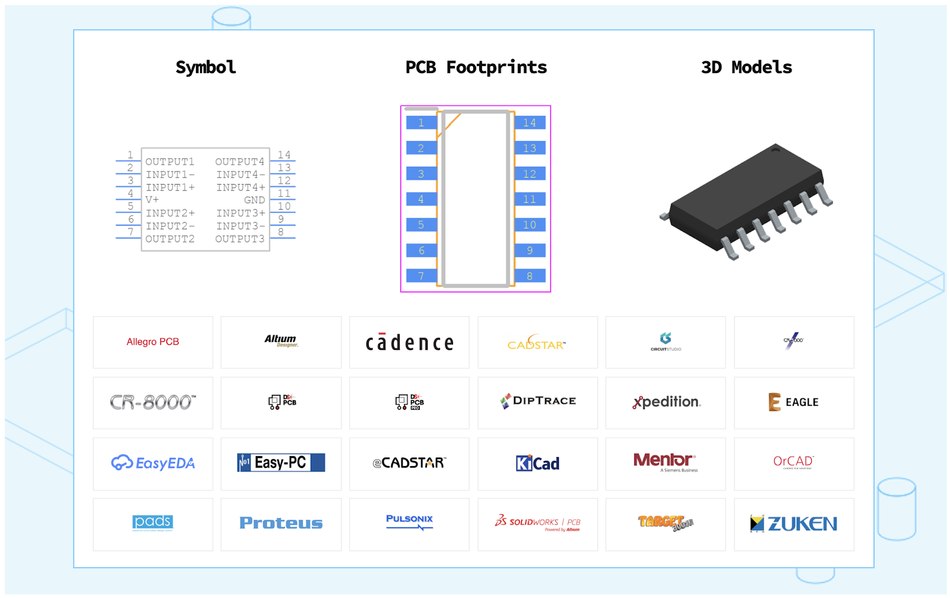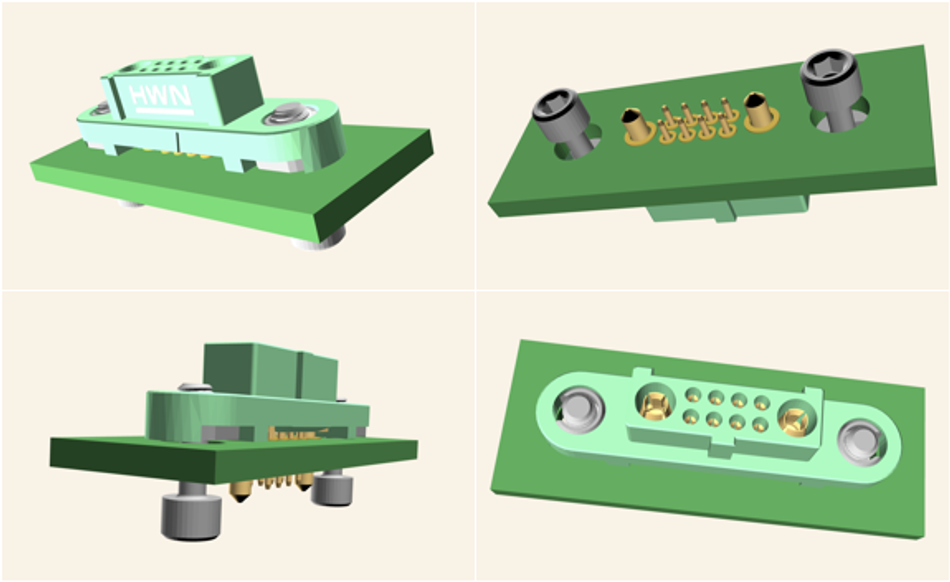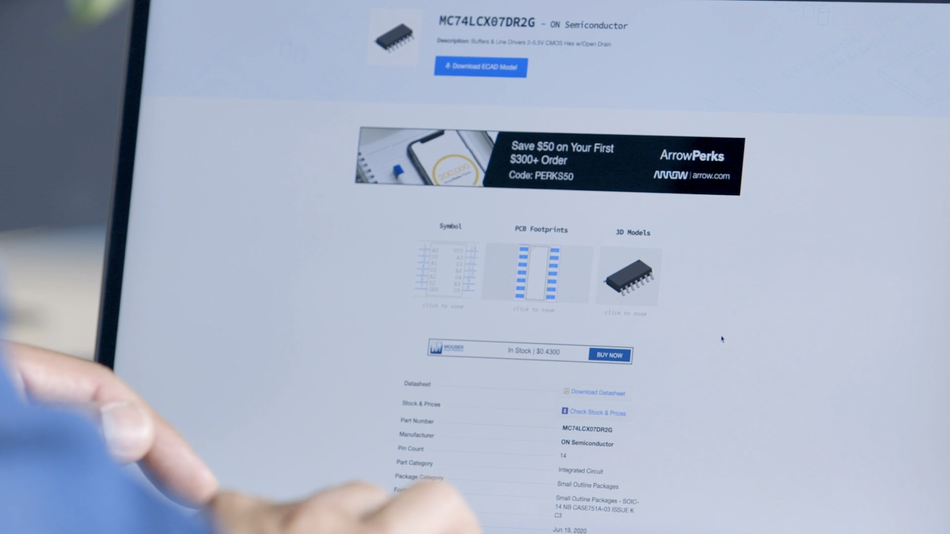Alex MacDougall is on a mission to solve a problem at the core of the electronics industry
We talk with SamacSys founder and CEO about his startup journey.

SamacSys, a Supplyframe Company, is the world’s leading provider of 2D and 3D CAD models for the electronics industry. The company, driven by founder and CEO Alex MacDougall, has a singular vision to free up electronic engineers' design process to ensure there is more time on innovation and less time on drawing CAD models. We sat down with MacDougall and asked him to reflect on the experiences that helped him launch a global company that offers a free service to engineers and gathered his thoughts on future trends and predictions for the electronics industry.
Introducing Alex MacDougall
MacDougall grew up in the rural area of Hertfordshire, North of London, and received his initial engineering education with the UK military, he went on to study electronics and circuit board design. After leaving the Royal Marines he completed the IPC CID certification, becoming the youngest person in Europe with the certification.
His first job in the electronics industry was in an applications Engineer (AE) role at the UK branch of PADS software, the global leader in PCB design software at the time. His love for engineering pulled him into an additional role in a design bureau in the same building as PADS Software. “I would go to the design bureau, from 5 or 6am and would work with them, designing circuits” recalls MacDougall. “Then I would do my nine to five as an AE. Then I'd go back to do more design work from five until late. So I was, for a number of years learning two different professions, one as the designer and one as the guy supporting other people using design software. I was grinding hard for a few years to give my career path various options.”
MacDougall found this combination of intimately understanding both electrical engineering design and software development would provide the confidence and knowledge for starting SamacSys many years later.
SamacSys Origin Story
Who is SamacSys?
The idea for SamacSys developed over many years as the issue of the lack of available CAD models for electronic engineers kept coming up again and again. “I'd be speaking with engineers from different companies and was listening to what they were saying, and this subject just kept coming up - and I couldn't believe that it hadn't been fixed yet,” says MacDougall. “I was also feeling my own frustrations from designing products and then hearing that it was more of a widespread issue and I just wanted to solve this for the industry.”
Every modern piece of technology contains a printed circuit board or PCB packed full of electronic components. Before a PCB gets made, it is designed in software (CAD) by an engineer with exact models of every single component within it. There are currently millions of components available for engineers to choose from for inclusion in their designs and thousands more are brought to market every year as technology advances. Correctly modelling the components, including their functions, their connections, and their physical dimensions is essential to ensure the PCB design is suitable for its application both in size and function. So engineers must painstakingly model each component themselves or spend hours finding and obtaining these models online.

SamacSys goes a long way to solve this problem by providing high-quality CAD models of components for free. The SamacSys model library contains millions of models that allow engineers to streamline the design process, reduce error rate, and innovate quickly.
Recommended reading: SamacSys Power User Case Study: Icarus-Design
The urgency to solve this industry-wide issue has always been the driver for Alex. From the very inception of SamacSys to today. The need to solve this issue is behind every decision the company makes.
The early days
SamacSys was started in 2010, while the world was still in recovery mode of the 2008 financial crisis. There was a degree of uncertainty in the market, but MacDougall had a certainty about the product. By observing other similar ventures at the time, he decided not to pursue a heavy VC investment, but rather try to go bootstrapped and in doing so avoid the risk of VC taking over significant equity-based on risk in the business model. “Despite the risks, in a way building the business was secondary,” explains MacDougall. “The first goal for us really was to solve a market challenge.”
This drive for an industry-wide solution restrained the company from scaling too early and instead focussed them on perfecting their product and testing their theory that this would become an essential service for all electronic engineers.
What worked for the company was that they had a product that made sense to potential customers and that they could get immediate validation of its value. Even on very early sales calls, MacDougall was able to make some initial sales which provided some cash but even more importantly the energy to continue the project buoyed by the reception their idea was receiving.
One of the best rewards from that early success was the genuine appreciation from engineers which they could express very clearly, not only with words of gratitude but with case studies where they could describe exactly how SamacSys was helping improve their design process.

Despite this initial success, there were still big hurdles in the early days of the company, one of the more difficult to overcome was getting taken seriously by larger companies in the industry. MacDougall remembers it was an easier task to be understood by the Electronic Design Automation players, but much harder to establish a reputation within the components business. “Imagine walking through the door of a leading component manufacturer or distributor, with a new world changing concept. I just looked like some crazy young guy with unrealistic dreams! Getting taken seriously by company execs was a nightmare early on. I’m pleased to say they have now become our customers. ” MacDougall remembers.
SamacSys in 2020 and beyond
SamacSys was recently acquired by Supplyframe, an intelligence platform for the global electronics value chain. Supplyframe’s solutions align electronics demand with supply and by delivering insights at key decision points throughout the entire design-to-source product lifecycle with the goal of ensuring a resilient and agile supply chain.
SamacSys had received other acquisition offers in the past, but they were not a good fit for MacDougall. “Supplyframe’s position in the industry allows us to stay neutral so that we can do what's right for the industry and not be steered towards one particular area in the market,” says MacDougall about the decision. “I have a vision match with Supplyframe CEO Steve Flagg, he understands what we are doing and gave me confidence that together we would be able to keep evolving our solution in a way that’s best for Engineers & our customers.”
The acquisition of Samacys by Supplyframe was based on a shared vision of expanding the intelligence that can be provided to engineers at the point of design. The combined entities have a belief that new forms of digital engagement drive innovation in electronics manufacturing, from initial idea to design-driven part selection to procurement-driven purchasing activities, all optimized alignment with supply chain capacity and market response.
This “Design-to-Source” lifecycle requires that organizations effectively manage direct materials sourcing and procurement across numerous siloed workflows and applications. By connecting engineering design and sourcing and augmenting decision-making capabilities with real-time market intelligence, Supplyframe and Samacsys offer resiliency, agility, and profitability to the electronics value chain.

What is next for SamacSys?
When asked about the future for SamacSys, MacDougall’s answer is clear: “Engineers of the future will not believe their senior colleagues used to waste their valuable time building CAD models. With our solution engineers can now experience ubiquitous CAD model availability, embedded at the point of design.”
The downstream impact of this vision is significant. Streamlining a design process means products are getting to market faster, while engineering teams are overall reducing costs and errors which again, enables more time for innovation and development.
Predictions for the industry
MacDougall is motivated by the advances occurring in the electronics industry including a move towards more modular design processes. “If you have a modular approach, it is easier to engage. We provide the building blocks, we have done the hard work already. Electrical engineering is a high barrier profession, you can’t just watch one YouTube video and be qualified, but modular design will help open access - and that will drive more people to innovate.”
Another exciting development for MacDougall is the continued connection to Artificial Intelligence (AI). “It’s reasonable to expect that some of the design can be done via a platform where the designer selects functionality, such as this device ‘has a screen’, ‘is USB powered’, etc. and the algorithm will be able to generate the specific product, essentially ready for manufacture.”
Final thoughts
SamacSys is a company with a singular vision to help an industry. Alex MacDougall and SamacSys are increasing the potential for innovation by freeing up electronic engineers from the tyranny of the CAD model. As MacDougall states: “If engineers can spend the time they used to waste building cad models thinking and building life-changing technology for humanity, - that has got to be a good thing right?”
About the Sponsor: Supplyframe
This article is sponsored by Supplyframe. Supplyframe aligns electronics demand with supply and brings new levels of resiliency to the global electronics value chain, with transformative, intelligence-based solutions to deliver insights at key decision points throughout the entire design-to-source product lifecycle. Leveraging billions of continuous signals of design intent, demand, supply, and risk factors, Supplyframe’s Design-to-Source Intelligence (DSI) Platform is the world’s richest intelligence resource for the electronics industry. Over 10 million engineering and supply chain professionals worldwide engage with our SaaS solutions, search engines, and media properties to power rapid innovation and optimize in excess of $120 billion in annual direct materials spend. Supplyframe is headquartered in Pasadena, Calif., with offices in Austin, Belgrade, Grenoble, Oxford, San Francisco, Shanghai, and Shenzhen.

